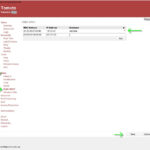Vite, as a lightning-fast frontend build tool, offers a development server that is both powerful and flexible. Among its many features, the server.proxy option stands out as an essential tool for modern web development. This guide delves into the intricacies of configuring a server proxy in Vite, explaining why it’s crucial and how to leverage it effectively.
Understanding Server Proxy and Its Importance in Vite
In modern web development, it’s common for frontend applications to interact with backend APIs. These APIs often reside on different domains or ports than the frontend dev server. This setup can lead to issues like Cross-Origin Resource Sharing (CORS) restrictions, making development cumbersome.
A server proxy acts as an intermediary, forwarding requests from your Vite dev server to another server. In the context of Vite, server.proxy allows you to route specific requests to a backend server, effectively bypassing CORS issues and streamlining your development workflow.
Why is a server proxy important in Vite?
- CORS Bypass: The most common use case. Browsers enforce CORS policies for security, preventing frontend code from making requests to different origins (domain, protocol, or port). A proxy server, running on the same origin as your dev server, can forward requests to the backend, circumventing browser CORS checks.
- Backend API Integration: During development, your frontend likely needs to communicate with a backend API.
server.proxylets you configure Vite to forward API requests to your backend server, even if it’s running on a different port or domain. - Simplified Development Workflow: By proxying API requests, you can develop your frontend against a real or mock backend without dealing with CORS configurations or deploying your backend to the same origin as your frontend dev server.
- Mimicking Production Environment: In production, your frontend and backend might be served from the same domain or a closely related setup. Using a proxy during development can help simulate this environment, making it easier to catch integration issues early on.
Configuring server.proxy in Vite: Options and Examples
Vite’s server.proxy option, configured within your vite.config.js or vite.config.ts file, provides a flexible way to set up proxy rules. It accepts an object where keys are path prefixes that trigger proxying, and values are proxy target configurations.
Let’s explore the configuration options with practical examples:
1. String Shorthand for Basic Proxying
The simplest form is using a string as the value. This is suitable when you want to proxy requests starting with a specific path to a single target.
import { defineConfig } from 'vite';
export default defineConfig({
server: {
proxy: {
'/api': 'http://localhost:3000' // Proxy requests starting with /api to http://localhost:3000
}
}
});In this example, any request from your frontend to http://localhost:5173/api/users (assuming Vite dev server runs on port 5173) will be proxied to http://localhost:3000/api/users.
2. Object Options for Advanced Control
For more granular control, you can use an object as the proxy value. This allows you to configure various aspects of the proxy behavior.
target: (string) The URL of the target server to proxy to.changeOrigin: (boolean) Set totrueif you want to change the origin of the host header to the target URL. This is often necessary for virtual hosted sites.rewrite: (function) A function that allows you to rewrite the path of the request before it’s sent to the target server.configure: (function) Provides access to the underlyinghttp-proxyinstance, allowing for advanced customization.
import { defineConfig } from 'vite';
export default defineConfig({
server: {
proxy: {
'/api': {
target: 'http://jsonplaceholder.typicode.com',
changeOrigin: true,
rewrite: (path) => path.replace(/^/api/, '') // Remove /api prefix when forwarding
},
'/foo': 'http://localhost:4567'
}
}
});- For requests to
/api, thetargetis set tohttp://jsonplaceholder.typicode.com.changeOrigin: trueensures theHostheader is rewritten. Therewritefunction removes the/apiprefix, so a request to/api/postsbecomes a request tohttp://jsonplaceholder.typicode.com/posts. - Requests to
/fooare simply proxied tohttp://localhost:4567using the string shorthand.
3. Regular Expressions for Path Matching
You can use regular expressions as keys in your server.proxy configuration for more flexible path matching.
import { defineConfig } from 'vite';
export default defineConfig({
server: {
proxy: {
'^/fallback/.*': {
target: 'http://jsonplaceholder.typicode.com',
changeOrigin: true,
rewrite: (path) => path.replace(/^/fallback/, '')
}
}
}
});Here, the key ^/fallback/.* is a regular expression. Any request path starting with /fallback/ will be proxied to http://jsonplaceholder.typicode.com.
4. Proxying WebSockets
server.proxy can also handle WebSocket proxying, which is essential for real-time applications.
import { defineConfig } from 'vite';
export default defineConfig({
server: {
proxy: {
'/socket.io': {
target: 'ws://localhost:3000',
ws: true,
rewriteWsOrigin: true, // Be cautious with this in production due to CSRF risks
},
},
},
});Setting ws: true enables WebSocket proxying. rewriteWsOrigin: true is often needed when proxying WebSockets, but be aware of potential CSRF vulnerabilities in production environments if not handled carefully.
Alt: Code snippet showing Vite configuration for server proxy, defining rules for API and WebSocket proxying with target URLs and rewrite options.
Advanced Proxy Configurations and Use Cases
As your application grows more complex, you might encounter scenarios requiring more advanced proxy configurations.
1. Multiple Proxy Rules:
You can define multiple proxy rules within the server.proxy object to handle different API endpoints or backend services. Vite will iterate through the rules to find the first match.
2. Conditional Proxying Based on Environment:
You can dynamically adjust your proxy configuration based on the environment (e.g., development, staging).
import { defineConfig } from 'vite';
const proxyOptions = {
'/api': {
target: process.env.API_BASE_URL || 'http://localhost:3000',
changeOrigin: true,
},
};
export default defineConfig({
server: {
proxy: process.env.NODE_ENV === 'production' ? {} : proxyOptions, // No proxy in production
},
});This example uses environment variables to determine the target URL and disables proxying in production.
3. Combining Proxy with HTTPS and HMR:
server.proxy works seamlessly with other Vite server options like https and Hot Module Replacement (HMR). You can enable HTTPS for your dev server while still proxying requests to a backend. HMR will continue to function as expected through the proxy.
4. Debugging Proxy Issues:
If you encounter issues with your proxy setup, here are some debugging tips:
- Check Vite Console Output: Vite often logs proxy activity in the console, which can be helpful for identifying if requests are being proxied correctly.
- Browser Developer Tools (Network Tab): Inspect the network requests in your browser’s developer tools. Look at the request URLs and headers to verify if proxying is happening as expected.
- Proxy Configuration Logging: Use the
configureoption to add logging within your proxy configuration to inspect requests and responses.
Best Practices for Using Server Proxy in Vite
- Security: Be mindful of security implications, especially when using
changeOrigin: trueorrewriteWsOrigin: true. In production, ensure your proxy setup is secure and doesn’t expose vulnerabilities. Explicitly defineallowedHostsfor added security, especially when usingserver.proxy. - Performance: While
server.proxyis convenient for development, be aware that it adds a slight overhead. For production, consider a more optimized proxy solution like Nginx or a dedicated API gateway. - Keep it Clean: Organize your
server.proxyconfiguration logically, especially as it grows. Use comments to explain complex rules. - Documentation: Document your proxy setup for your team, explaining the purpose of each rule and how it relates to your application’s architecture.
Beyond server.proxy: Alternative Solutions
While server.proxy is a powerful built-in feature, for very complex proxying needs or scenarios requiring more control, you might consider:
- Dedicated Proxy Server: For advanced use cases, setting up a dedicated proxy server like Nginx or Apache might be more appropriate. This offers greater flexibility and performance, especially in production-like environments.
- Custom Middleware: Vite allows you to add custom middleware to its dev server. You could create custom middleware to handle proxying logic if
server.proxydoesn’t meet your specific requirements.
Conclusion
Vite’s server.proxy option is an invaluable asset for frontend developers, simplifying integration with backend APIs and resolving common development challenges like CORS. By understanding its configuration options and best practices, you can significantly enhance your development workflow and build robust web applications. Mastering server.proxy in Vite empowers you to create a seamless development experience, focusing on building features rather than wrestling with proxy configurations. Explore the Vite documentation further to discover the full spectrum of server options and optimize your development environment.


